Destination Guide
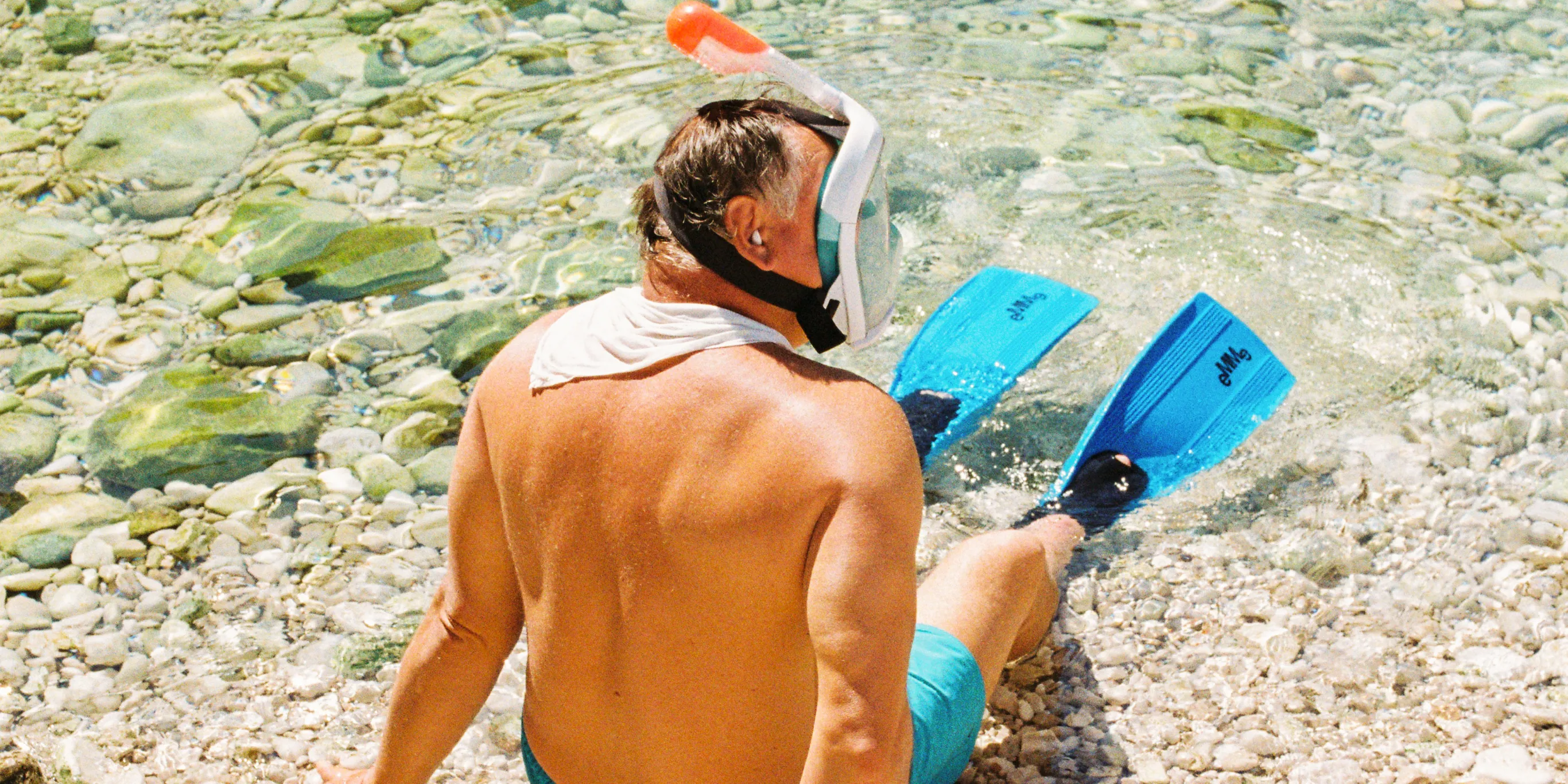
Words Gisela Williams Images Primož Zorko Date 9 Aug, 2023
Become inspired by the places, faces, and spirit of this captivating region in Gisela’s own words that follow. Accompanied by beautiful imagery captured by Primož, the story intersects layers of history, tradition, and energetic mysticism.
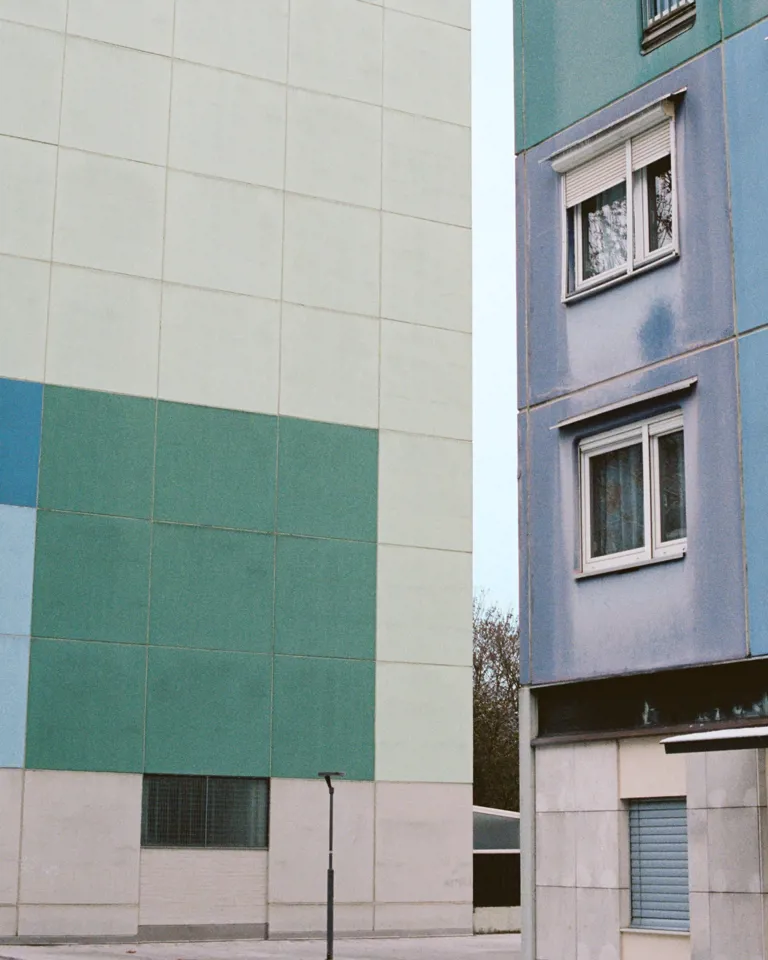
Socialist architecture in the Dravlje district of Ljubljana
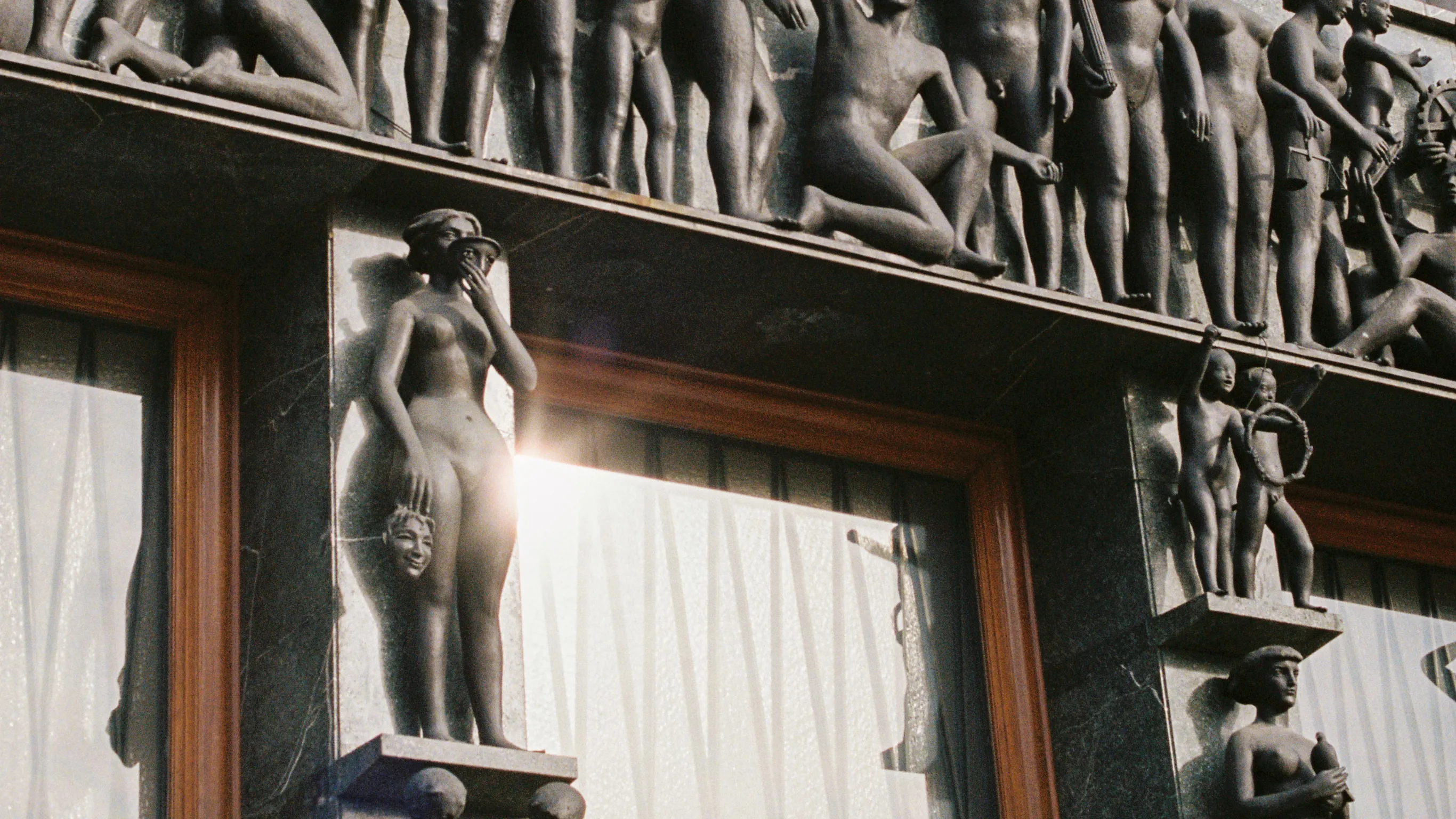
A few days before I headed off on a road trip through the Balkans, specifically focused on Slovenia, Croatia, and Montenegro, I did a bit of historical research. Very quickly, my head was spinning. This ethnically diverse region, which stands at the crossroads of East and West as well as three major empires—Austro-Hungarian, Russian, and Ottoman—seemed to have inspired more intrigue, bloodshed, and power games in the last three thousand years than the Game of Thrones, complete with a noteworthy obsession with dragons.
War waged with a vengeance in the twentieth century, with the Balkan Wars of 1912 and 1913 acting as a prelude to the outbreak of the First World War, which was sparked by the assassination of Archduke Franz Ferdinand, the heir to the Austro-Hungarian throne, by a Bosnian Serb nationalist; the 1990s brought the messy dissolution of communist Yugoslavia. Still today, open wounds, both below and on the surface, remain from the Bosnian War, a violent genocide that took place between 1992 and 1995.
Sometimes a detail or architectural site that strikes us as particularly charming—a monumental, crumbling, centuries-old city wall of stone; an island with more churches than full-time citizens; wide-open fields that lead to mountain foothills—were born of war, a time of plague, or an aggressive overcutting of trees for shipbuilding. It might sound counterintuitive, but occasionally what begins as a traumatic event can, over time, be perceived as something of great beauty.
Though it’s often hard for us to understand how these things evolve, sometimes challenging circumstances can give birth to positive consequences. While there is no question that the violent conflict and radical nationalistic politics in the Balkans caused a great collective trauma that is still affecting contemporary politics to this day, it also resulted in the slowing down of industrial development and the protection of huge pockets of wilderness.
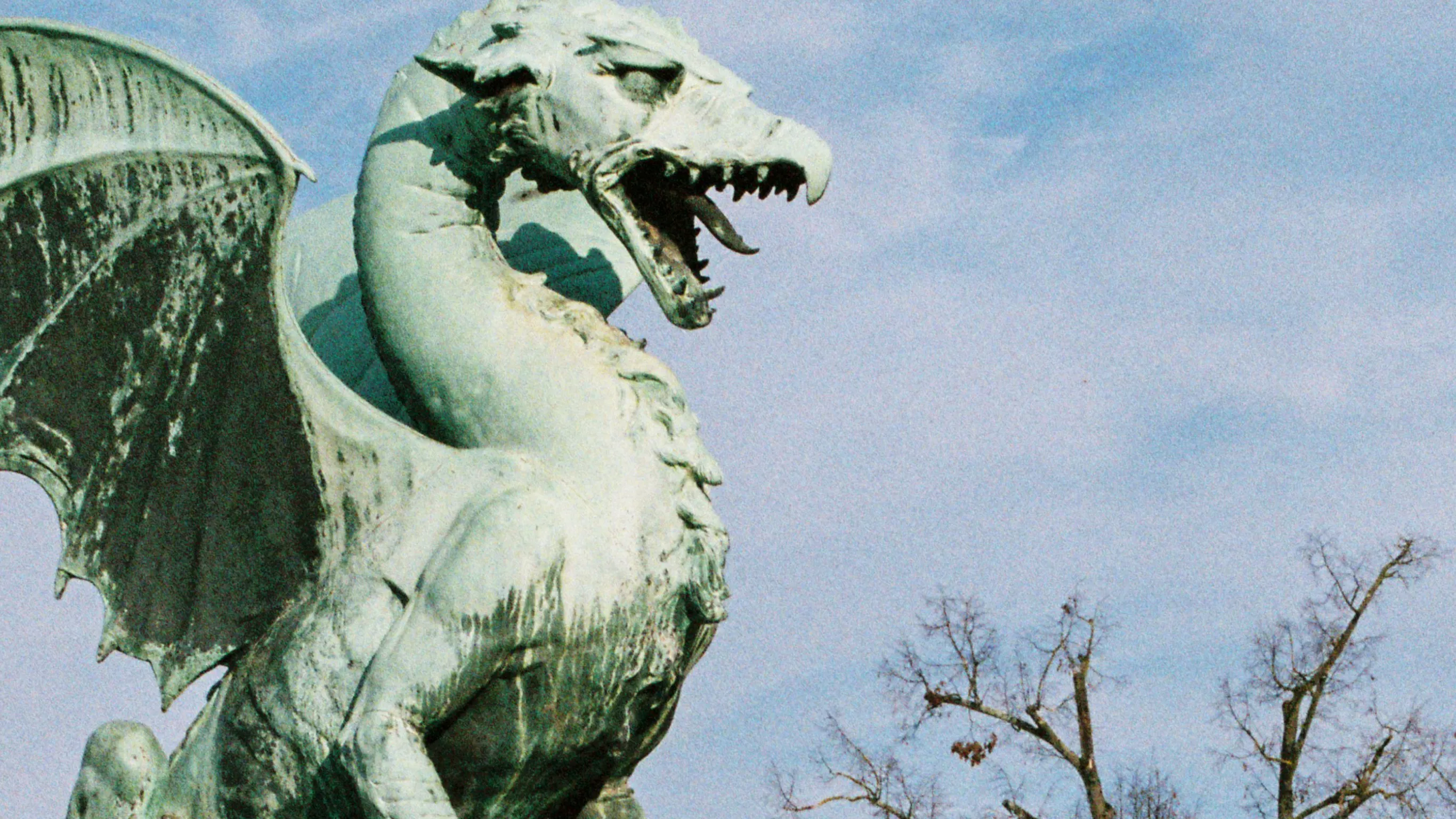
I started my adventure through these three neighboring countries in Ljubljana, today easily one of the most charming small cities in Europe. With its historic center divided by the Ljubljanica river, known as the Sava in the Middle Ages, the city is a major trade route that predates Roman times.
Its greenish waters are lined with leafy trees and crossed by picturesque stone bridges and stone embankments designed by the celebrated architect Jože Plečnik, whose landmarks in the city are designated UNESCO World Heritage Sites. This is all made that much easier to enjoy because, in 2007, the city’s historic quarter was designated a pedestrian-only zone and is now car-free. Slovenia, which boasts great stretches of protected forest, mountains, and hundreds of natural hot springs, is successfully embracing an eco-friendlier type of tourism.
Listen
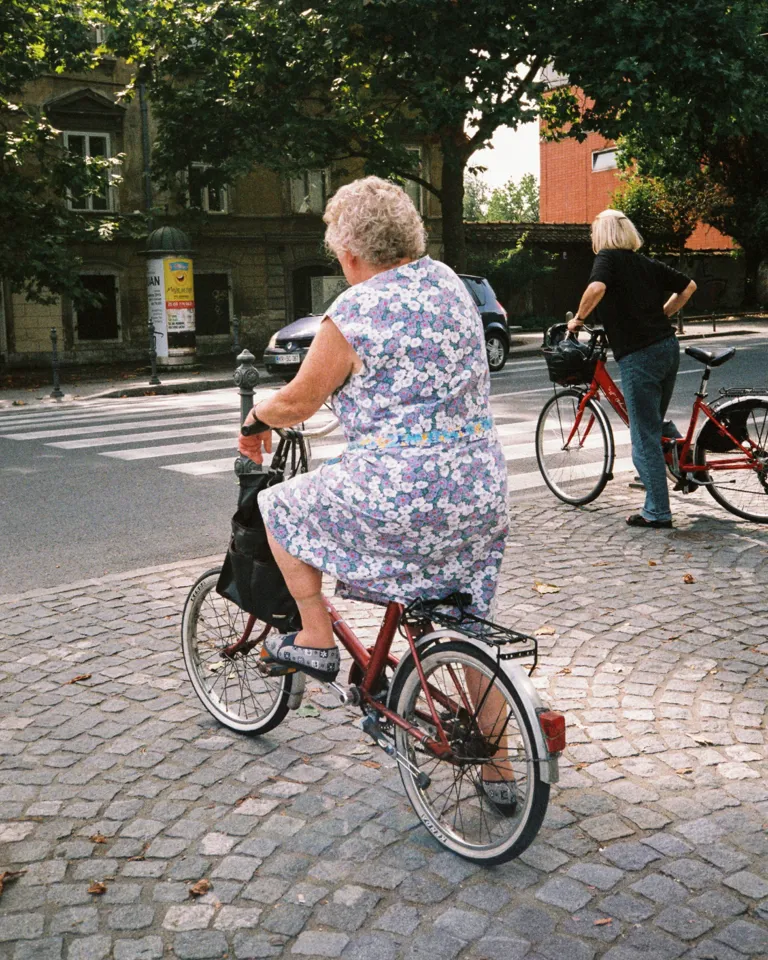
A local riding a bike in the old city of Ljubljana
I had one of the best pastries of my life—a “cruffin”: half muffin, half croissant, filled with honey-flavored cream and caramelized apple slices and topped with bee pollen—in a tiny new bakery called Pekarna Ana run by the country’s most famous chef, Ana Roš, who has won stars and accolades for Hiša Franko, a pilgrimage-worthy restaurant located in a remote valley about a two-hour drive from Ljubljana.
I also noticed dragons everywhere: carved in stone and printed on T-shirts and flags. It is said that the city was founded by the Greek hero Jason, on his way back to Greece with his Argonauts and the stolen golden fleece, when he slew a dragon living in the marshes at the edge of a lake, apparently the site the city today. Dragons were central to the city’s medieval coat of arms, and dramatic bronze statues of them grace the Dragon (formerly Jubilee) Bridge, which was built by the architect Giorgio Zaninovich at the start of the twentieth century. Locals still refer to their home as the City of Dragons.
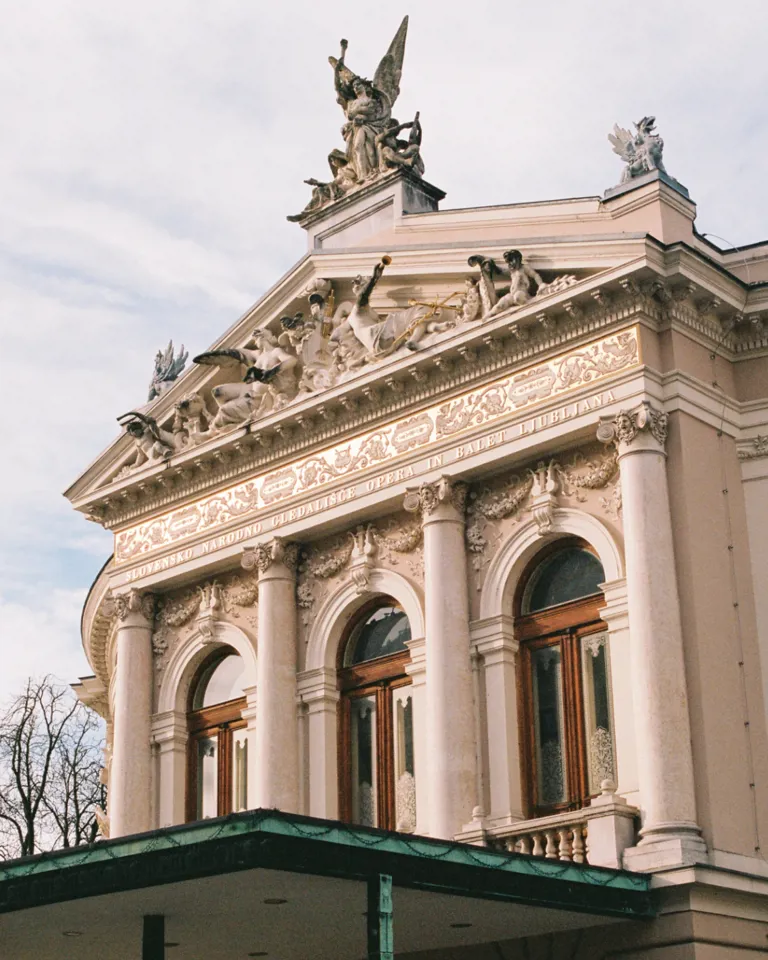
The Ljubljana Opera House
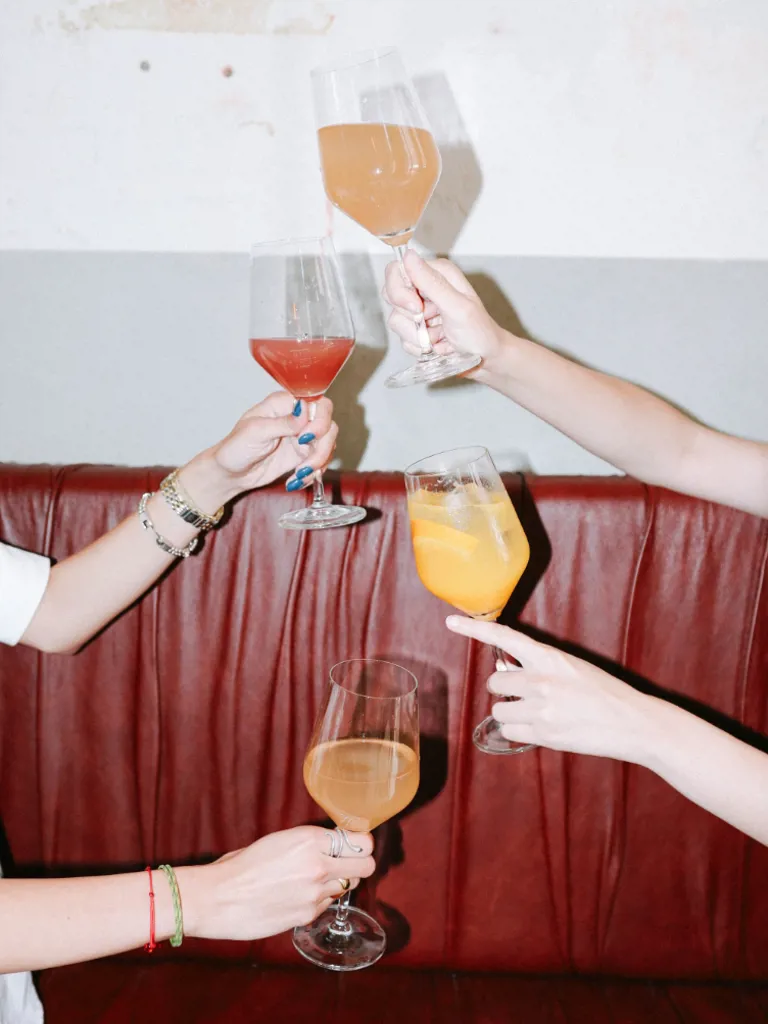
TOZD A unique all-day place for a coffee, homemade drinks, beers, or cocktails, with a nice interior design and contemporary art on display.
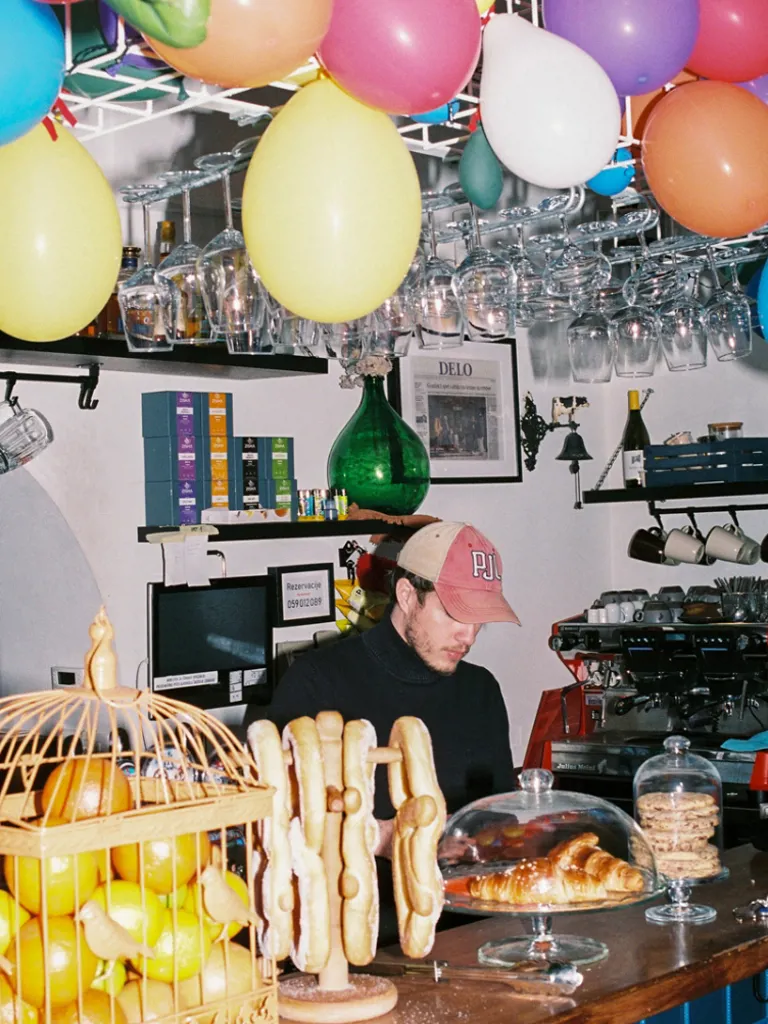
Ferdinand An atmospheric bar with live music and DJ events that feels fresh and full of creatives, spilling out onto the neighboring church’s staircase.
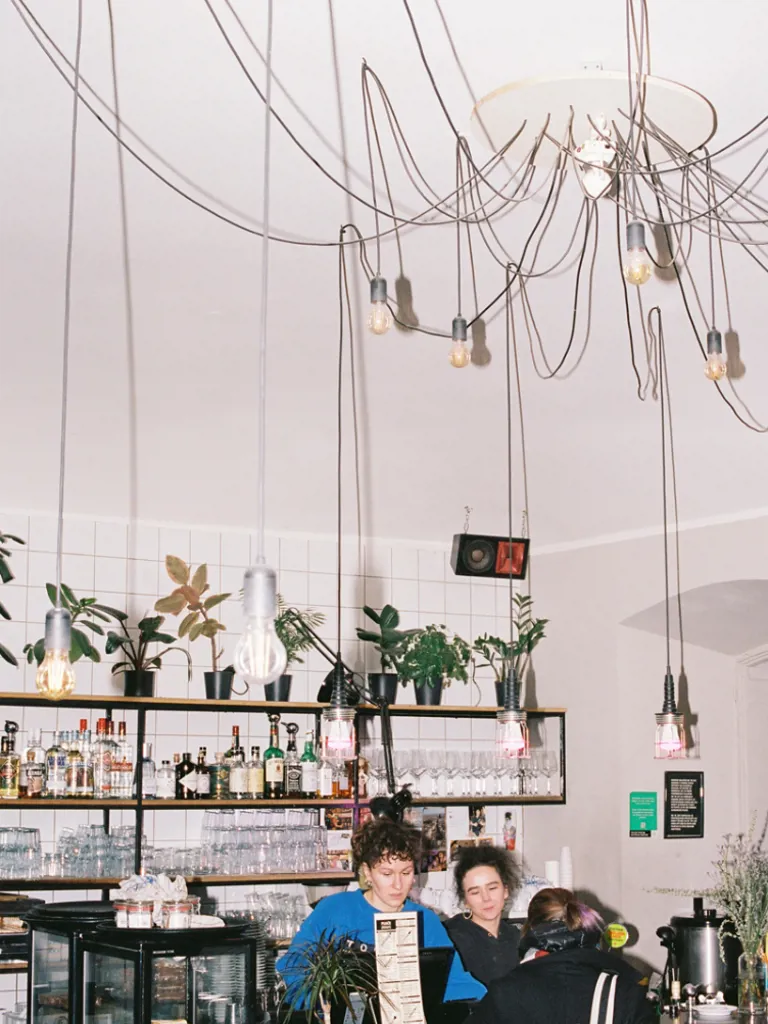
Pritličje A chill and fun venue with a good selection of drinks. Pritličje often hosts lectures, talks, and exhibitions, pushing for LGBTQI+ rights and safe zones.
“Slovenia is a very strong place energetically,” confirmed the artist Maja Babič Košir. We were having a drink in Lolita Eipprova, a café in a historic building with crumbling stone walls and arched ceilings that was recently reinvented by the architect Andrej Mercina and the artist Jaša Mrevlje Pollak. Also seated with us was the city’s (if not the entire region’s) most ambitious gallerist, Piera Ravnikar, who was in the middle of launching a massive new space on the old town’s main avenue.
For the past few years, Piera, who never seems to stop moving, has channeled all of her energy into supporting Balkan artists, many of them women, and promoting them on the international scene. Last year she launched the Ljubljana Art Weekend, a three-day dynamic program that showcases all the creative projects and places in the city and takes place at the end of May.
“In the northeast of the country there are dozens of thermal springs,” added Piera. These days there is a great appreciation, not just by outdoor-loving visitors but by Slovenia’s creative scene, of the country’s pristine natural landscapes and exceptional biodiversity, its swaths of forests, network of underground springs and caves, and high mountain peaks. Several of the artists in Piera’s stable, including Maja and the up-and-coming artist Neza Knez, use the country’s forests and fairy tales—as well as the region’s war-related traumas—as a starting point for their work.
When visiting DJs come to the city to collaborate with Nimaš Izbire, a creative collective founded in 2019 by the Slovenian DJ Gabriele Steffe, it’s become a tradition to take them on a hike in a wild place outside the city the day before the show. “It might not seem it from the music,” said Gabriele, “but nature is a huge inspiration for us. It’s a mood.”
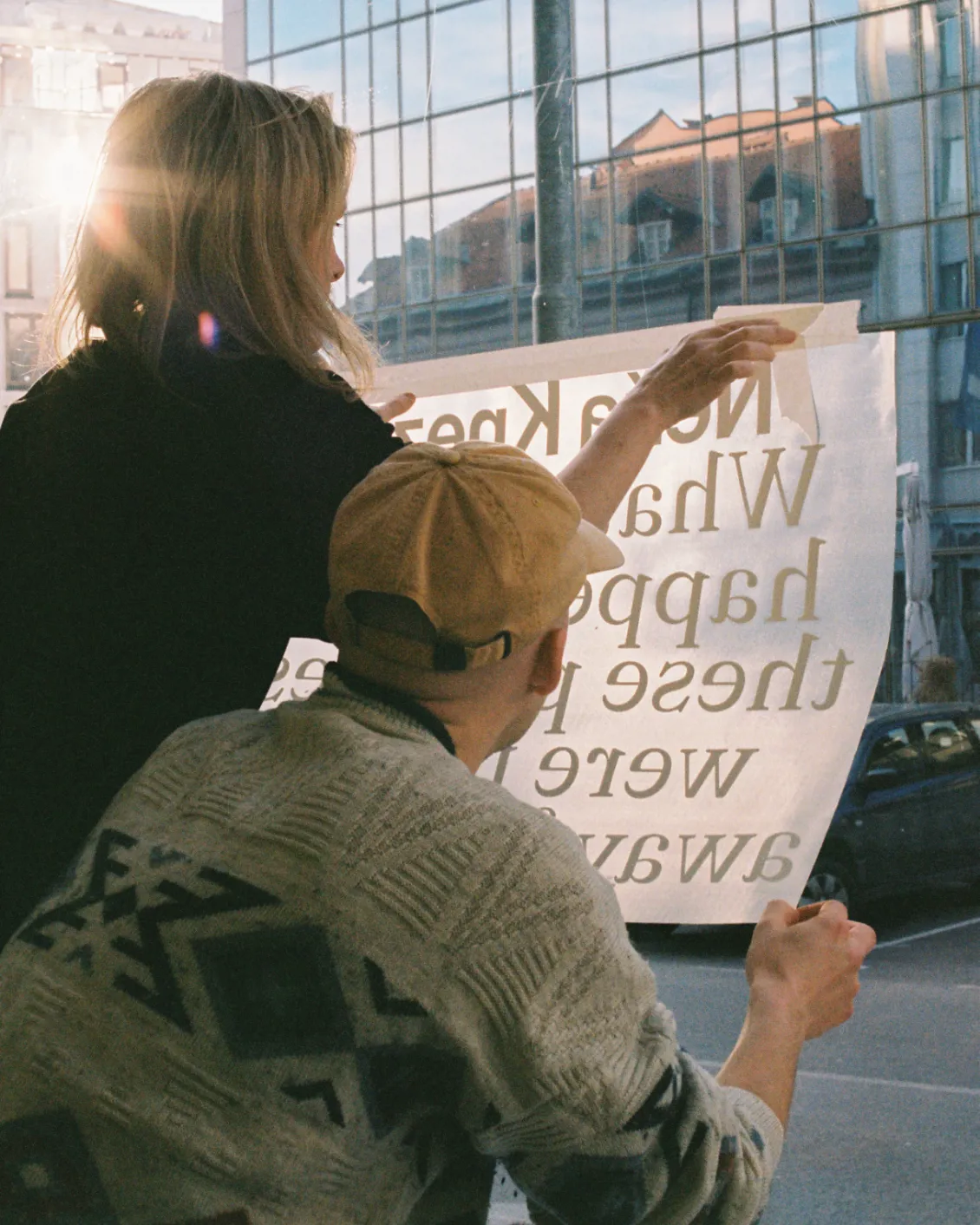
Gallerist Piera Ravnikar opening her new gallery
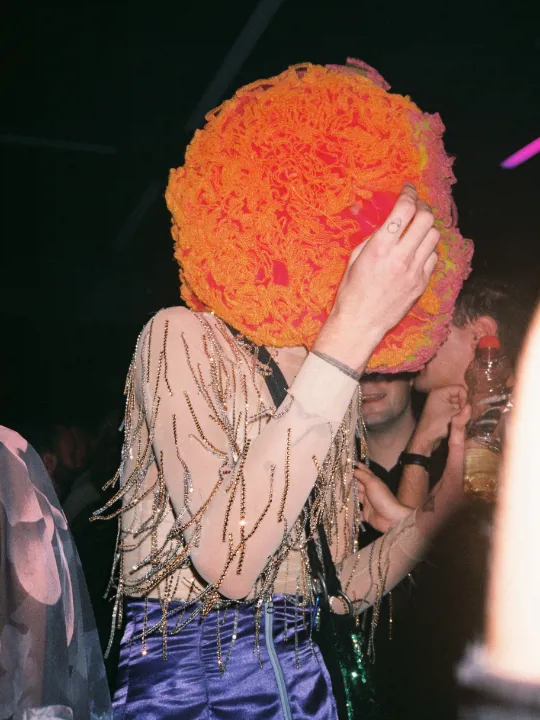
A masked dancer at Klub K4, Ljubljana’s oldest and still most happening club
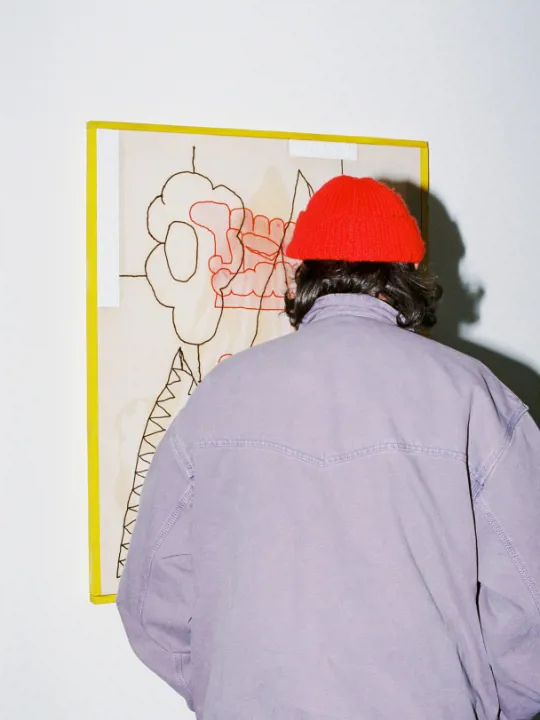
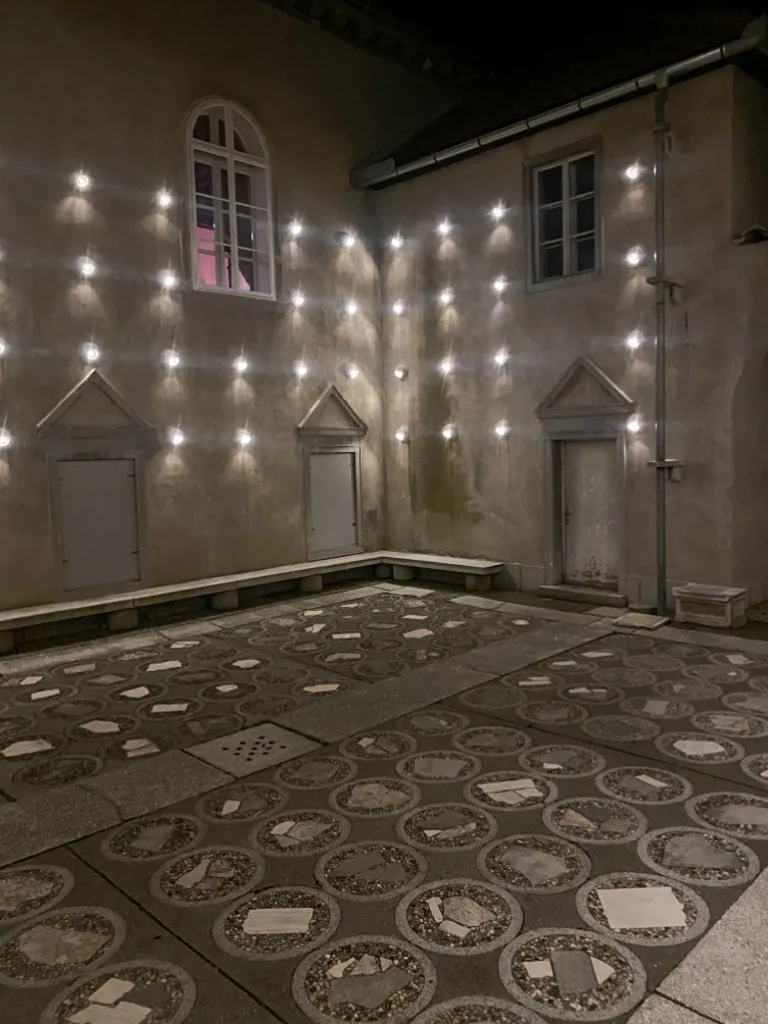
Križanke A breathtaking outdoor concert venue designed by the renowned Slovenian architect Plečnik.
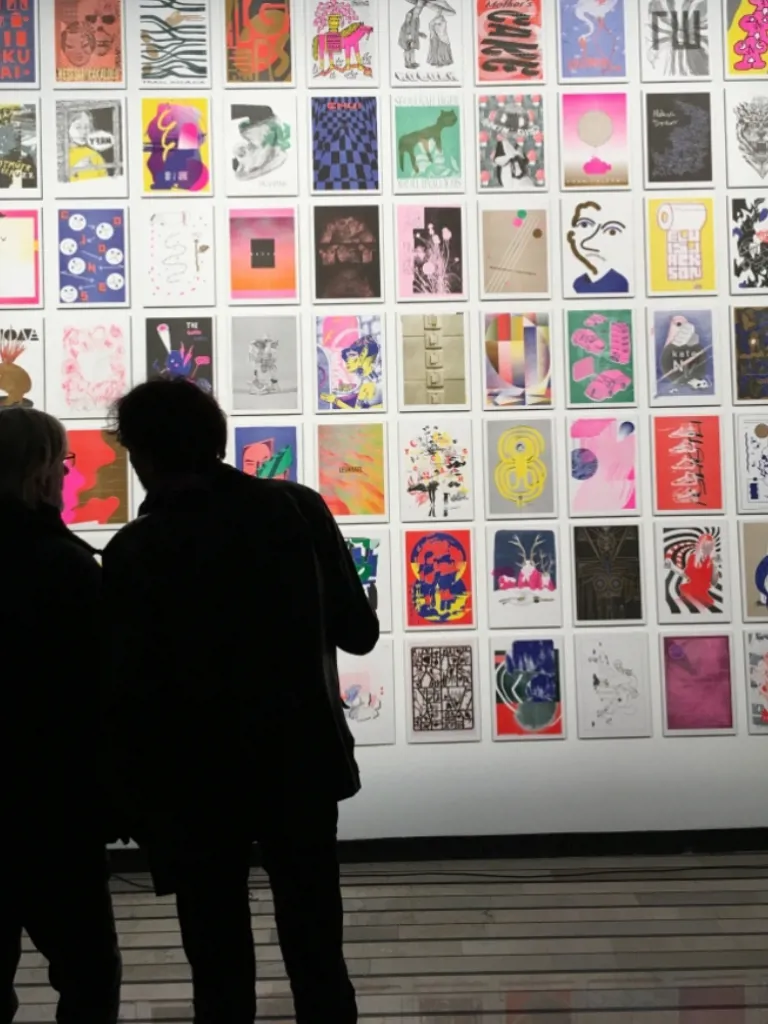
Kino Šiška Her favourite venue, a concert hall for events with a cafe and bar.
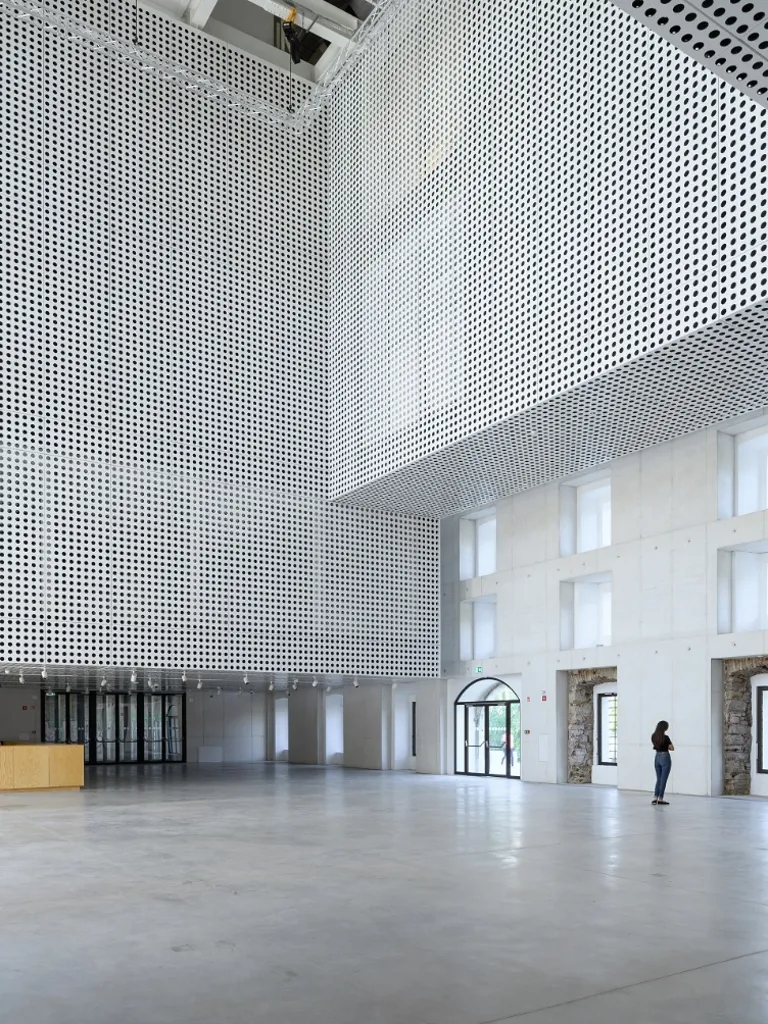
Cukrarna A former sugar refinery transformed into a cultural hub and gallery for contemporary art.
Gabriele’s club nights, like Strom (which means “electricity” in German), usually take place just outside Ljubljana’s center in one of two clubs located in a massive squat (and former army barracks) called Metelkova Mesto. The complex of studios and concrete courtyards decorated with rusty sculptures made from found objects is the biggest underground hub for music and art in the region.
For Berliners missing the ’90s, it’s a welcome emerging scene. “Artists from Berlin say playing here is one of their best gigs,” said Gabriele.
The term Nimaš Izbire translates as “you have no choice,” which, explained Gabriele, ironically refers to the scrappy DIY spirit that exists in the city. “Most of us that are part of the scene came here from other more remote parts of the country to study and find opportunity,” he described. “We kind of all banded together to create something original.”
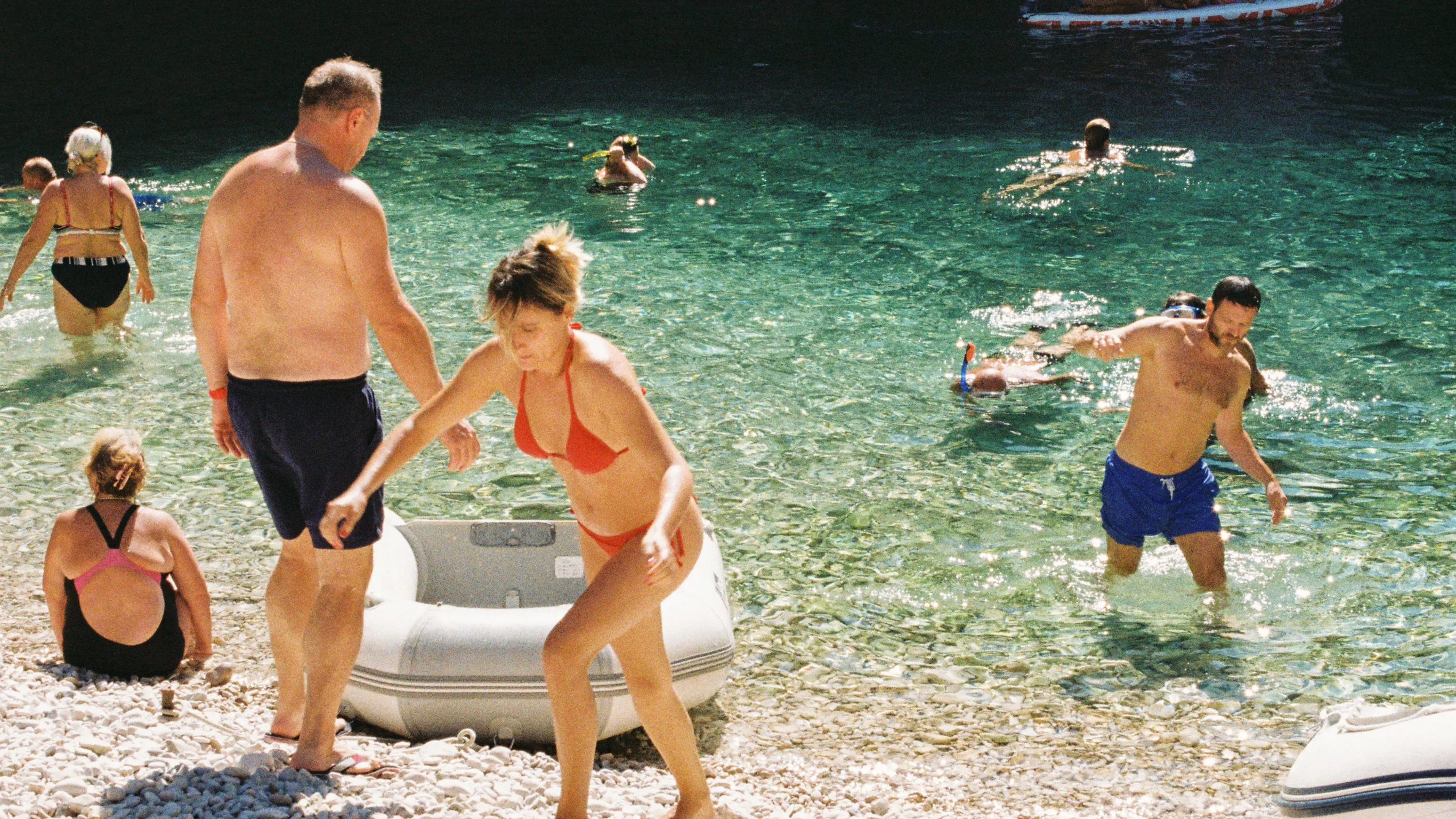
Istria, about the size of the city of Rome, is an unusual arrowhead-shaped peninsula that points to the sea. It is a fertile land, much of it made up of a rich red soil, that yields truffles, excellent natural wines, and award-winning olive oil.
The region’s Italian bounty and flair is not surprising; it was conquered initially by the Romans in 178 BC and has often been controlled by Italy, as recently as the first half of the twentieth century.
Istria’s small historic seaside cities, like Poreč and Rovinj, are picture-perfect tourist destinations:
It’s impossible to imagine now how dangerous this coastline once was. For centuries small ports like Rovinj were attacked, destroyed, and plundered by pirates and land-grabbing empires.
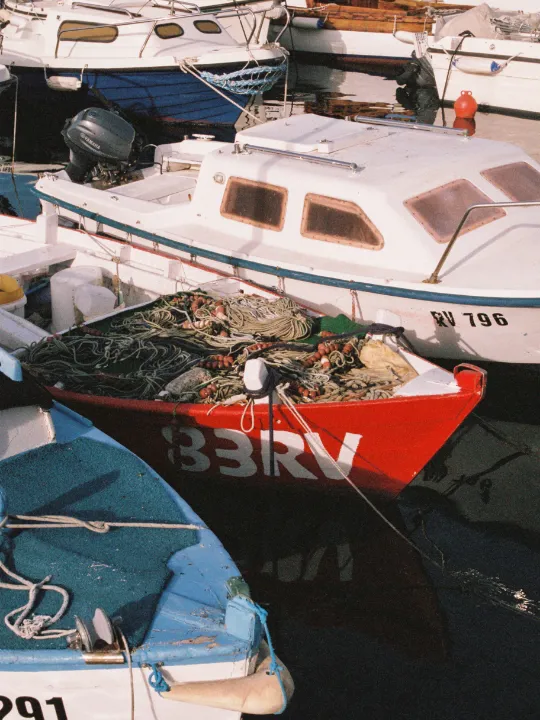
Boats in the Rovinj harbor, and a view of the sea from the charming old town
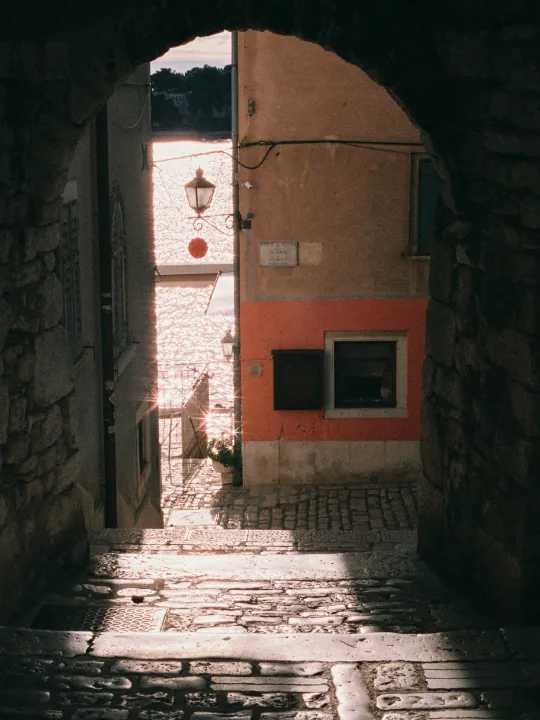
As tourists we tend to flock to the sea, but that is a recent luxury. For much of history, when troops and invaders got around by ship, the coastline was a dangerous place to live. Most people created strongholds in the interior and lived on hilltops. Indeed, Rovinj was once a tiny island, but its status in the seventeenth and eighteenth centuries as a very important port meant it had to be so strongly fortified that it was joined to the mainland in the mid-1700s.
You can thank those unstable times for all the quaint hilltop towns that dot the Istrian countryside. Alan Mandic, founder of the travel company Secret Dalmatia, had told me that a unique way to explore the Istrian countryside was to combine culinary stops with a tour of the region’s “dragon” or “ley” lines. The term ley lines was coined by the British writer Alfred Watkins in the 1920s in his book The Old Straight Track to describe what he claimed were the earth’s energy sources:
In the case of Istria there are several sites that are connected by drawing a straight line from one to the other: the Roman temple of Nin; the Temple of Augustus in Pula; and the still-unexcavated Varvaria, which is nicknamed the “Croatian Troy” because of the rare artifacts already discovered there. At the center of at least three such lines is the hilltop village of Motovun.
If a mystic earth-energy site smells like truffles, then Motovun must be a very powerful spot. The charming medieval fortress town that looks over the Mirna River Valley is said to have been built by giants. Today the town is a truffle-hunting capital—the largest truffle ever found was dug up in the nearby Motovun forest—and is lined with little shops selling local gourmet specialties spiked with truffles.
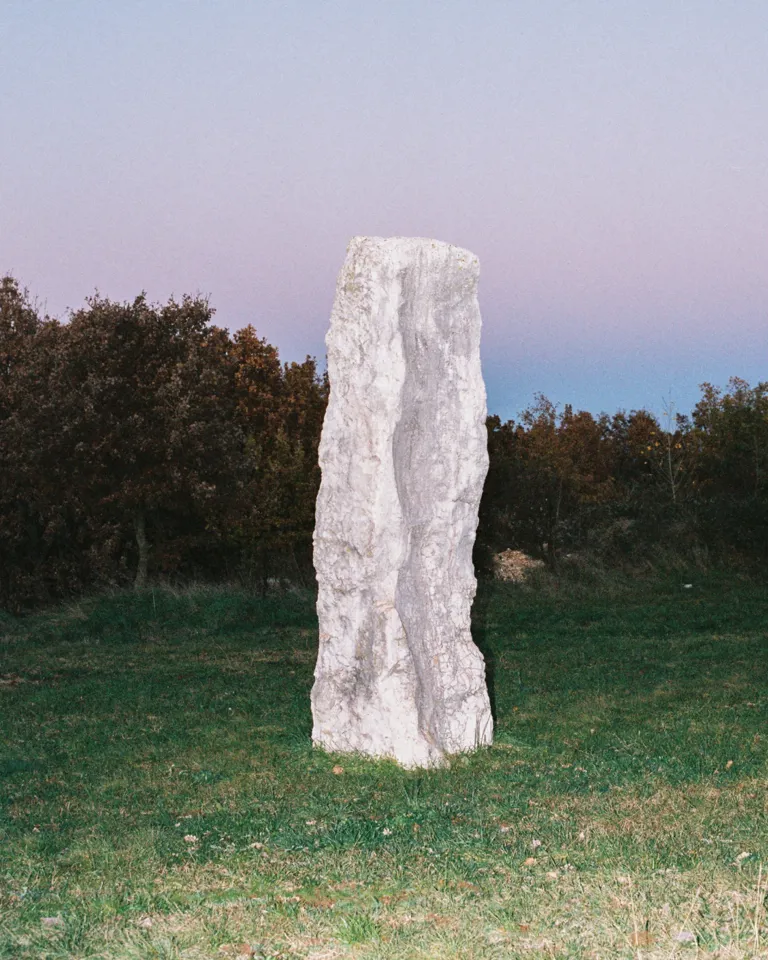
A megalith stone in the picturesque village of Visnjan
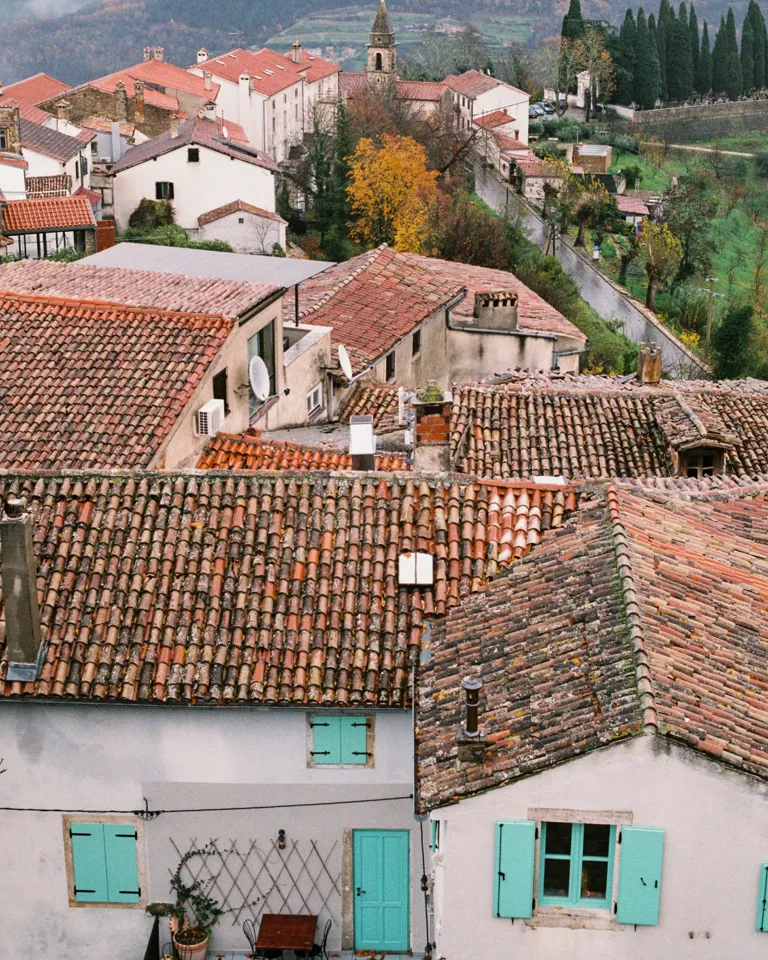
The ancient hilltop town of Motovun, filled with truffle hunters and shops
After loading up with sausage and cheese, my guide Srdjan Babic drove us to the mysterious archaeological sites near the port of Poreč, which was on a dragon line connected to Motovun: three neighboring hills covered in ancient stone blocks and apparently still rich with artifacts.
Exploring Istria’s inland, especially from the unusual perspective of its ancient sites, was an unforgettable adventure, but exploring Croatia’s thousands of miles of coastline and its Dalmatian beaches, especially near the small city of Makarska, is also a standout experience. Primož had tipped me off to another kind of line in Croatia, referring to the still mostly secret surf lineups closer to Croatia’s border with Montenegro. “It’s not the best surf and it’s very fickle,” he said, “but there is a very cool community that has grown around it.”
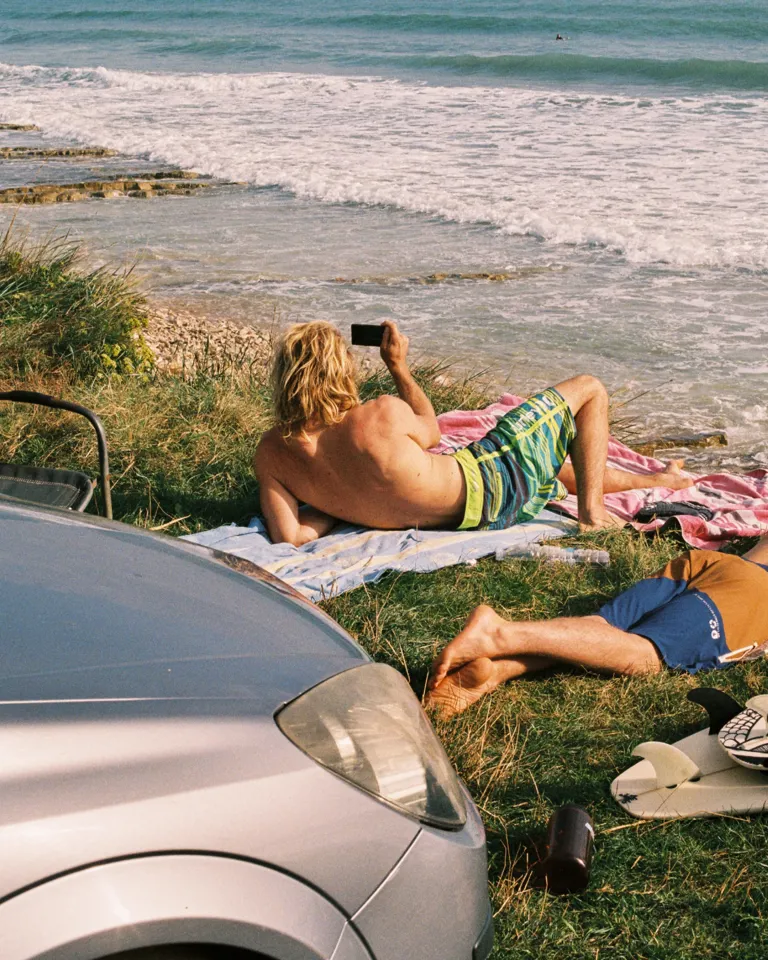
Surfers brave the waves, and watch from the sidelines, at a secret surf spot in Croatia
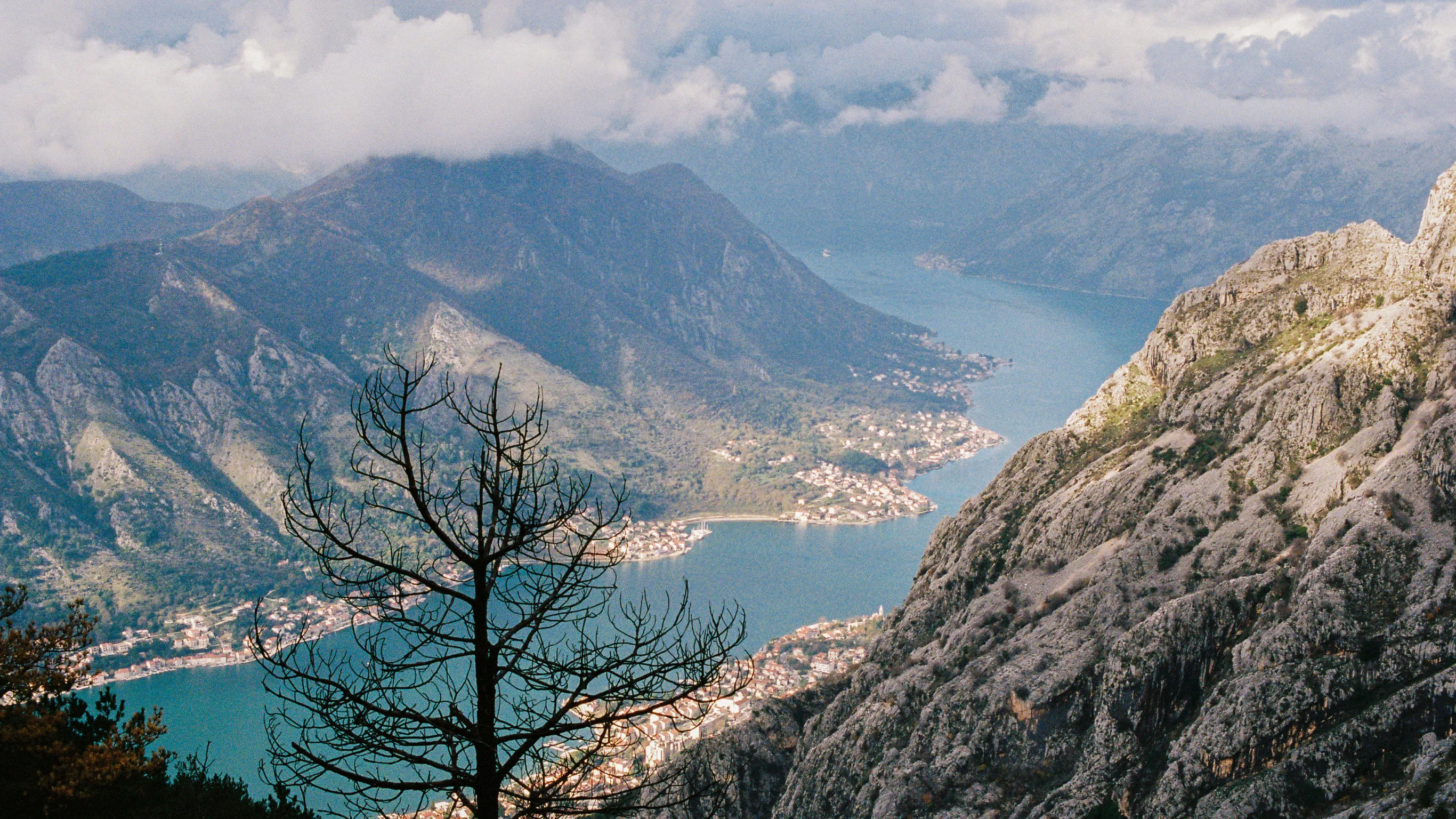
This was one of the jewels of the Venetian republic, which ruled here for almost 400 years, from the fifteenth to the eighteenth century. Its narrow mouth is dotted with tiny islets, one topped with an ancient monastery and another—Mamula Island—a nineteenth-century fortress that has been reinvented as one of the country’s most notable new luxury properties.
Exploring the bay on a sun-filled day can truly spark joy, especially in one of the vintage teak boats that the Mamula island offers. Visit the gem-like waterside medieval towns of Perast and Kotor; make a stop at the tiny isle of Our Lady of the Rocks, upon which is a church and a little historical museum filled with cabinet of wonder–worthy artifacts like a tapestry woven of gold and silver threads that apparently took twenty-five years to finish; and have some freshly harvested oysters on the dock at Školjke Boke, a sustainable oyster and mussel farm.
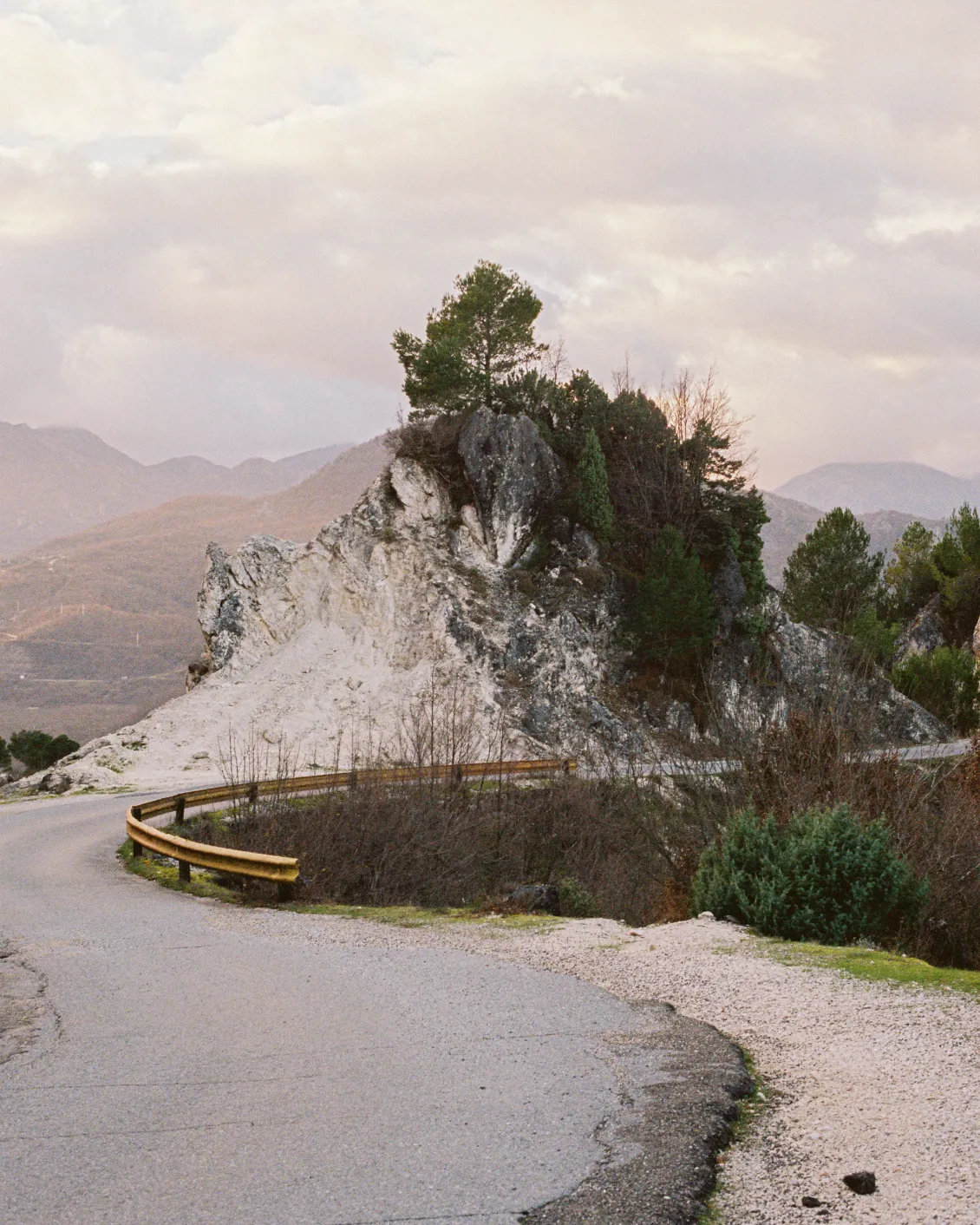
A paved road winds through the mountains in Montenegro
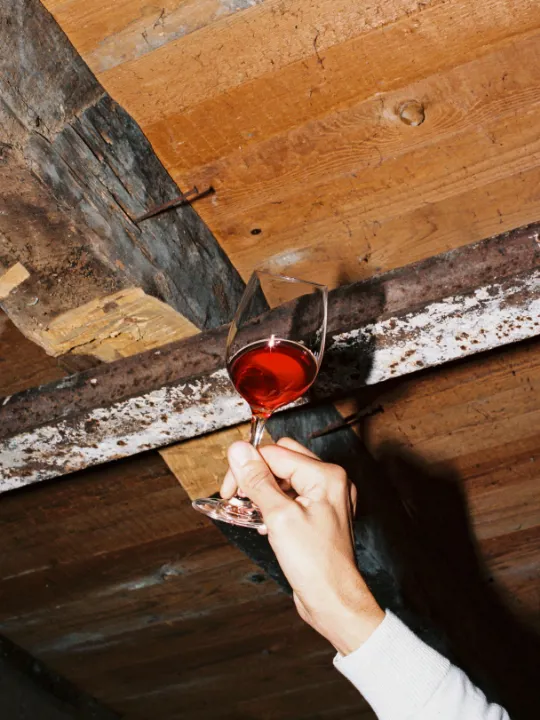
Inspecting a glass of the dark red Vranac wine produced at the Garnet Winery near the Skadar Lake
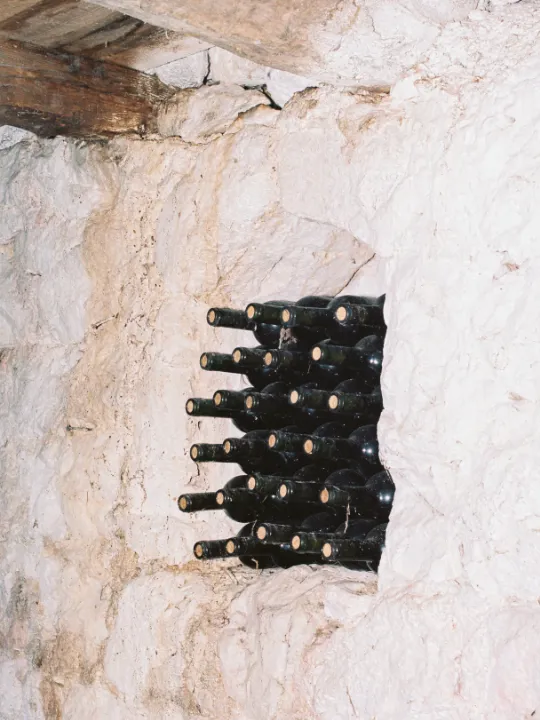
Despite all the pleasures to be found in the bay, almost every Montenegrin I met told me that to truly experience the essence of the country, I’d have to head to the mountains and beyond: to Skadar, the largest lake in Southern Europe. And so I did, guided by Drazen Vlahovic, who works with the 3e travel company. We drove above Kotor along winding narrow roads, stopping once or twice to take in the breathtaking views of the bay from above.
Drazen explained to me that almost every Montenegrin is connected to an old mountain village, typically growing up and spending the summer weeks with cousins, running around and being watched by grandparents who keep vegetable gardens and often produce a few bottles of wine from their grapevines.
Historically of course, living in these remote villages was less of a choice than a necessity. When the Ottomans ruled this region starting in the fifteenth century, the successful resistance of the Montenegrin princes was based in these far-flung hamlets of stone; to this day, locals boast about their refusal to surrender to the Ottomans, which also might explain their obsession with producing and eating pork products like prosciutto.
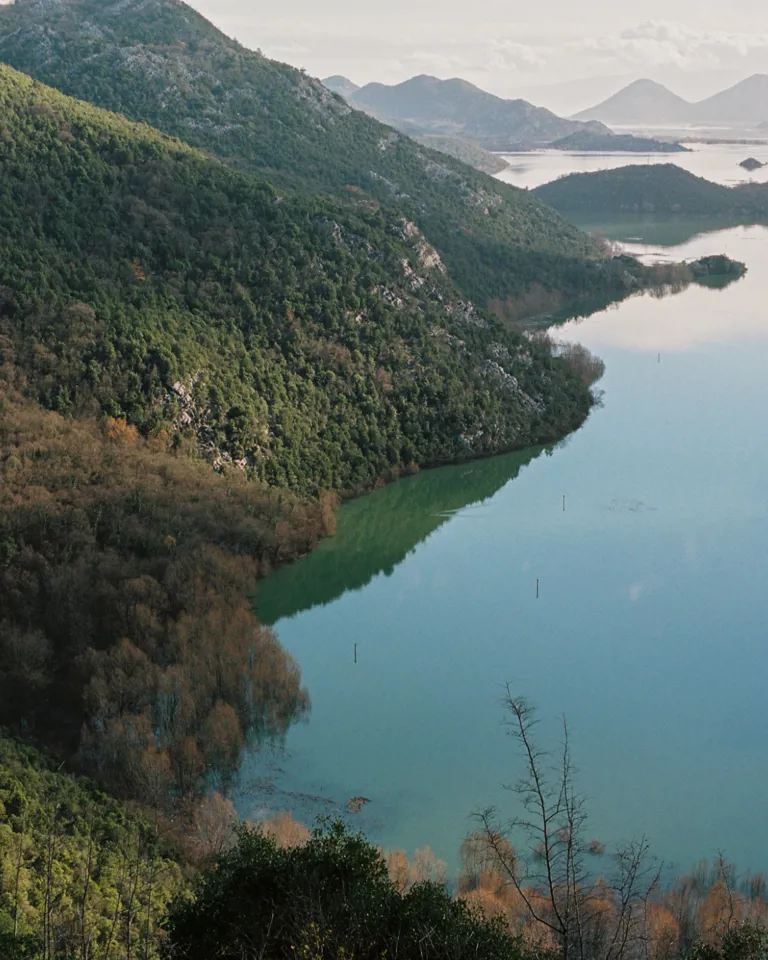
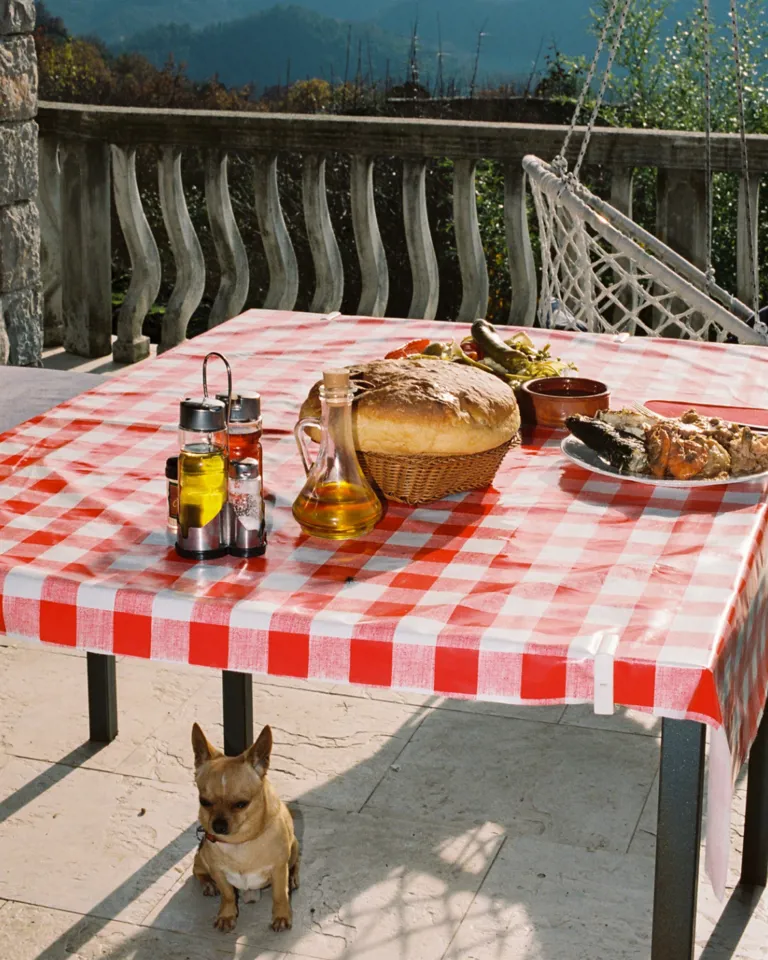
Holding out in the mountains has, over time, shaped a stubborn mentality, as Drazen admits with a laugh. Even twentysomething Montenegrins still quote a stanza from one of the masterpiece epic poems by the legendary nineteenth-century leader and philosopher Petar Petrović-Njegoš, which opines something to the effect that Montenegrins are like hard nuts: if you try to break them, you’ll just break your own teeth.
Lake Skadar is shared with Albania, but here in Montenegro it is designated a national park. Rounding a corner and arriving at a lookout point over the lake took my breath away.
We drove about ten minutes on a winding one-track road along the lake and arrived at Rijeka Crnojevića, which is the name of both a river and a town where the Montenegrin royal family was from. A line of quaint houses and fish restaurants overlooked the water, with small fishing and cruise boats tied up along its embankments; it was a scene from a fairy tale.
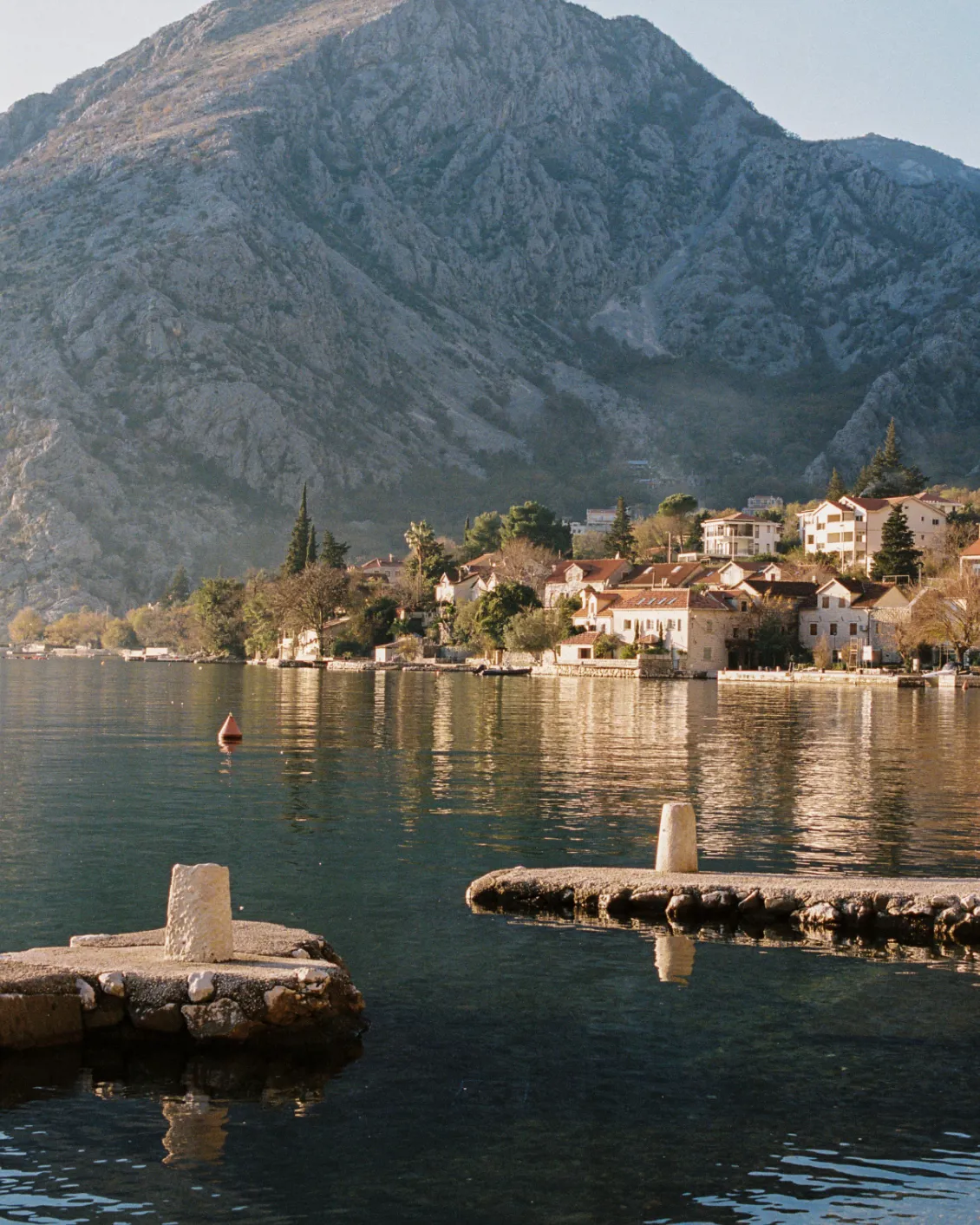
Exploring Venetian-era villages along the Bay of Kotor
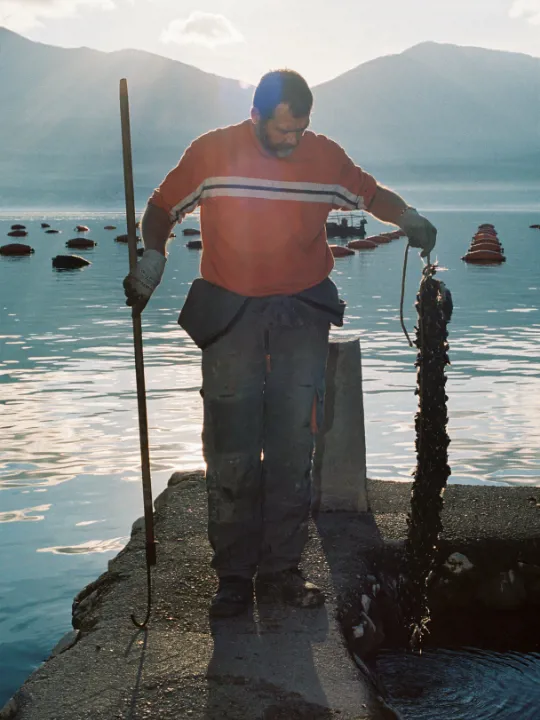
Scenes from a sustainable oyster farm on Bay of Kotor
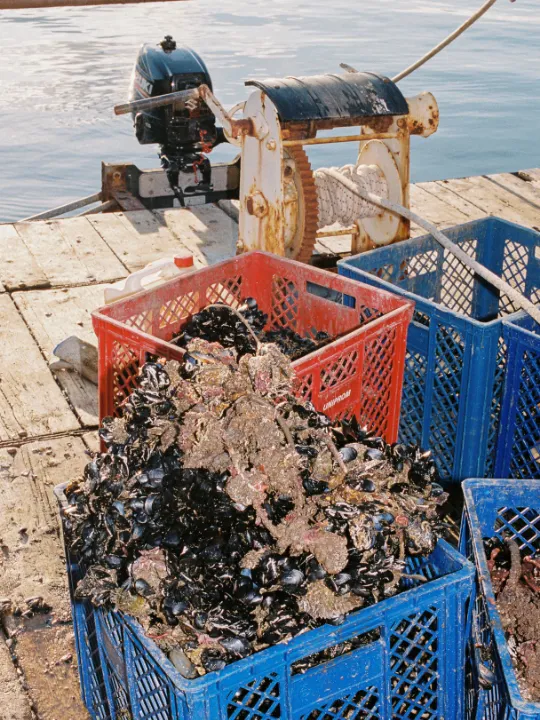
Retracing our route, we made a stop at a stand-alone restaurant and small farm called St. Jovan to meet the chef Dusko Jovicevic, who had spent his childhood summers with his grandparents in the town. “My family has lived in that village for more than 500 years,” he said. Although most Montenegrins live in the city, he and his family decided to make a go of living by the lake, growing and catching most of the ingredients they use for the slow-cooked dishes—such as eel risotto and marinated trout—served in the restaurant.
Thanks to sustainable tourism, some of Montenegro’s mountain villages are slowly being renovated and energized by small enterprises. The stone hamlet of Godinje, about an hour’s drive from Rijeka Crnojevića, is beautifully poetic, its abandoned houses covered by vines, but it’s coming back to life thanks to the family-owned small-production winery Garnet, located in current director Miško Leković's family home. “We call it Garnet because we often find the stones in the soil of our vineyards,” he said.
Here, visitors can try Garnet’s rich Vranac wine—made from the country’s most signature indigenous grape, which produces a red wine that is strong and dark—at a table on a stone terrace, along with a meal of local cheeses and charcuterie. “It’s just like the meals we’d have with extended family for a Saints’ Day feast,” said Miško.
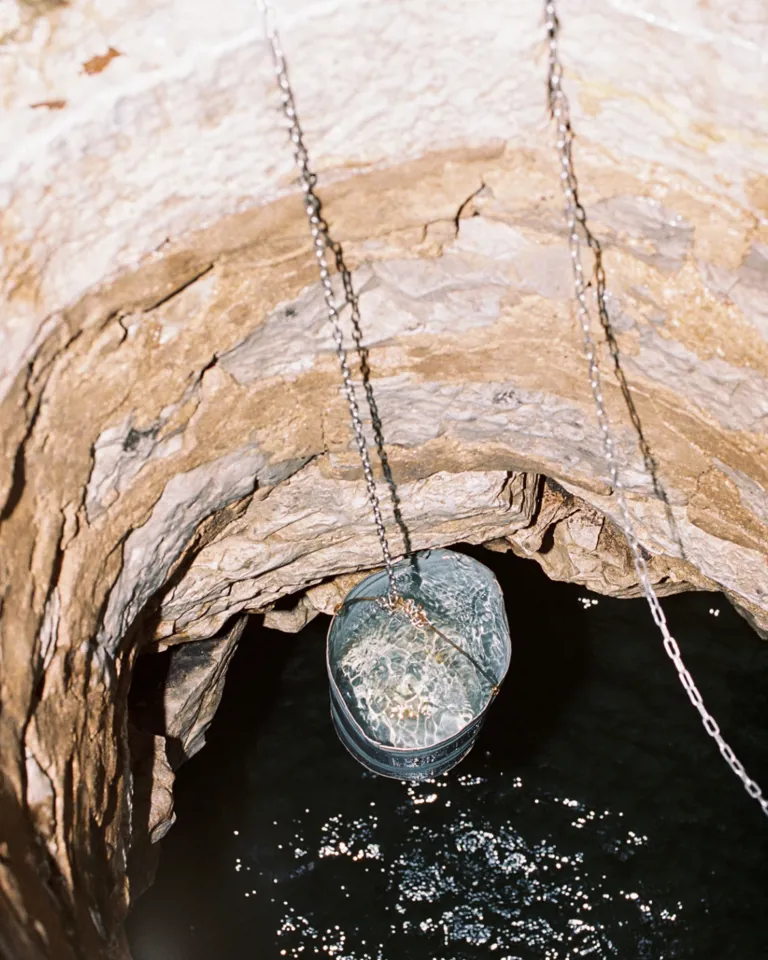
The next day we headed back to the other side of Skadar, to the northern edge, where from certain viewpoints it was possible to overlook Albania. We met up with the historian Gazmend Kovaçi and the architect Korab Kraja, both of whom had an interest in the historic water systems of the area’s mountain villages. We drove to the village of Veliki Ostros and walked up a path behind a house, which led to a small open field comprised of a flat grassy area on which about a dozen stone wells were emerging from the ground, and surrounded by chestnut trees so old and crooked, they seemed to be a group of old wizards whispering at each other.
Most of the wells collected rainwater, rather than connected to an underground spring, and each one belonged to a group of families. These wells need to be studied and preserved, explained Gazmend, because they illustrate a unique technology that was developed over centuries. One of them still had a bucket and chain attached to it, so I went through the exercise of sending the bucket down and bringing up water. I poured some into my water bottle and took a sip; it was fresh and sweet. If the outside world starts to fall apart, I thought to myself, it sure would be good to have a little house and garden hidden near Lake Skadar in the Balkans.
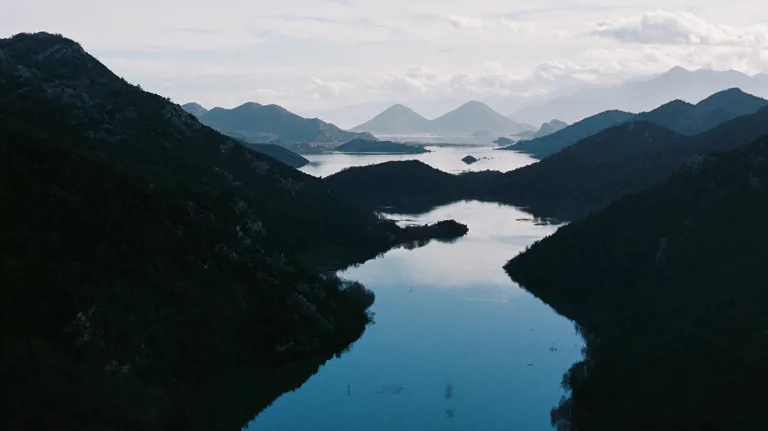
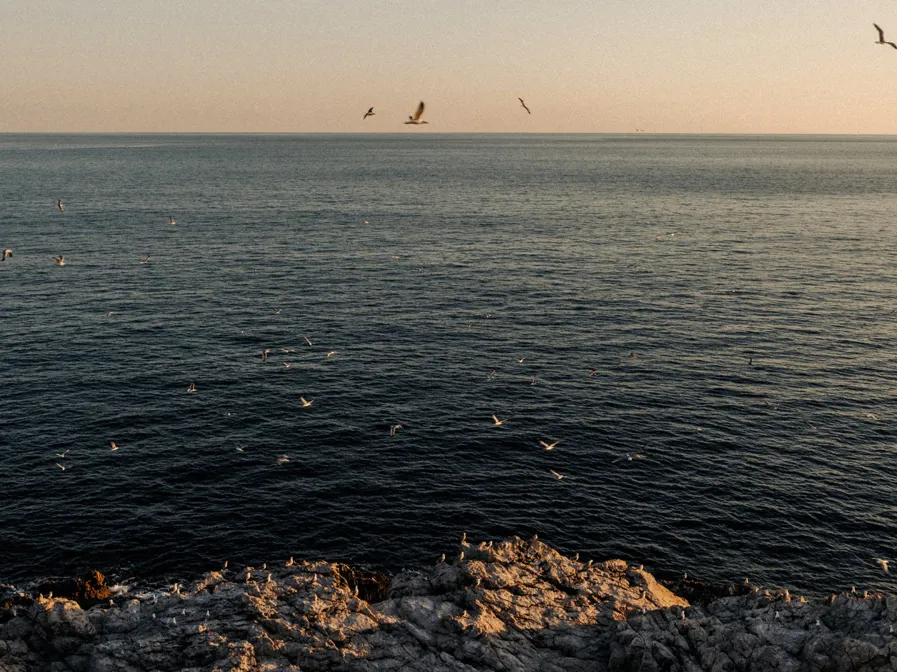
Destinations
Want some adventure but can’t give up on the luxury? Come end of summer, lovers of design, nature, wellness, and culture will be drawn to Mamula Island hotel set in a carefully restored 19th-century fort.
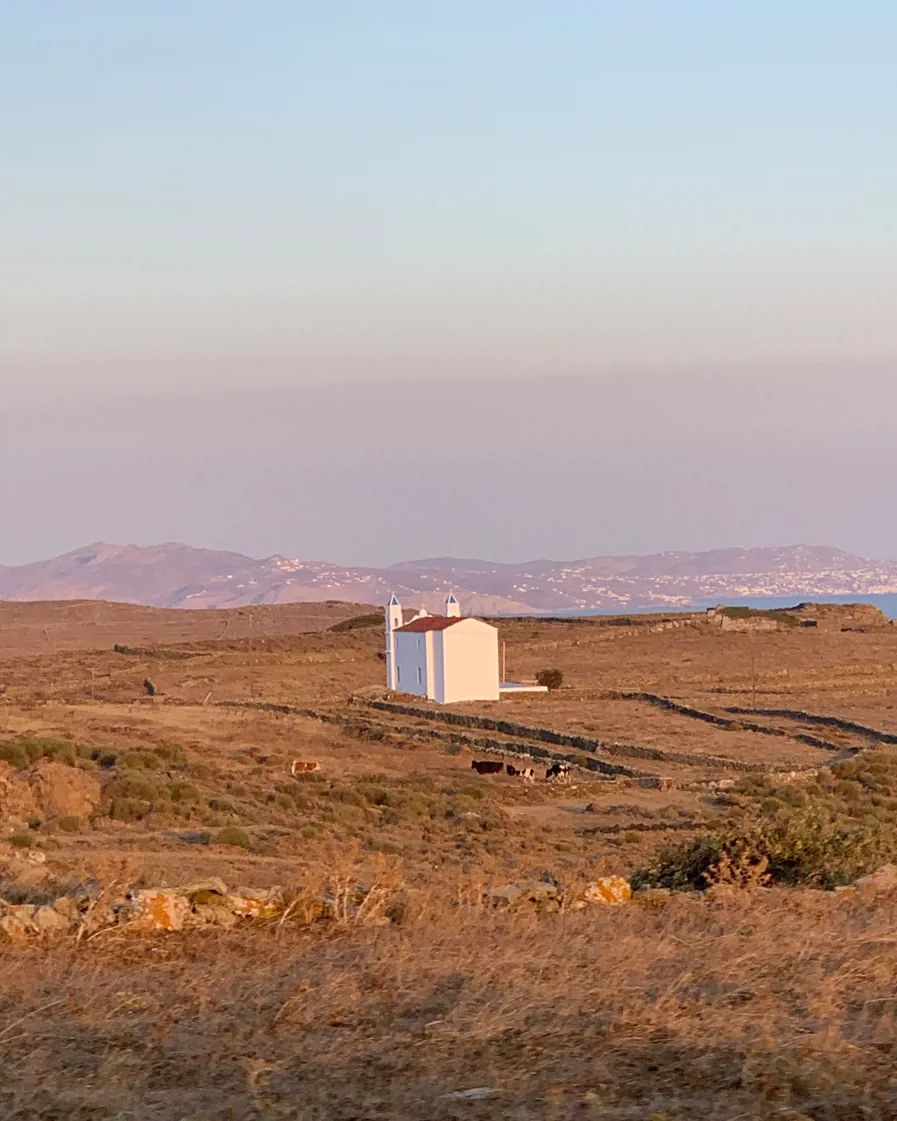
Destinations
To help you get inspired, we asked the inveterate travelers of Design Hotels where they’re headed.
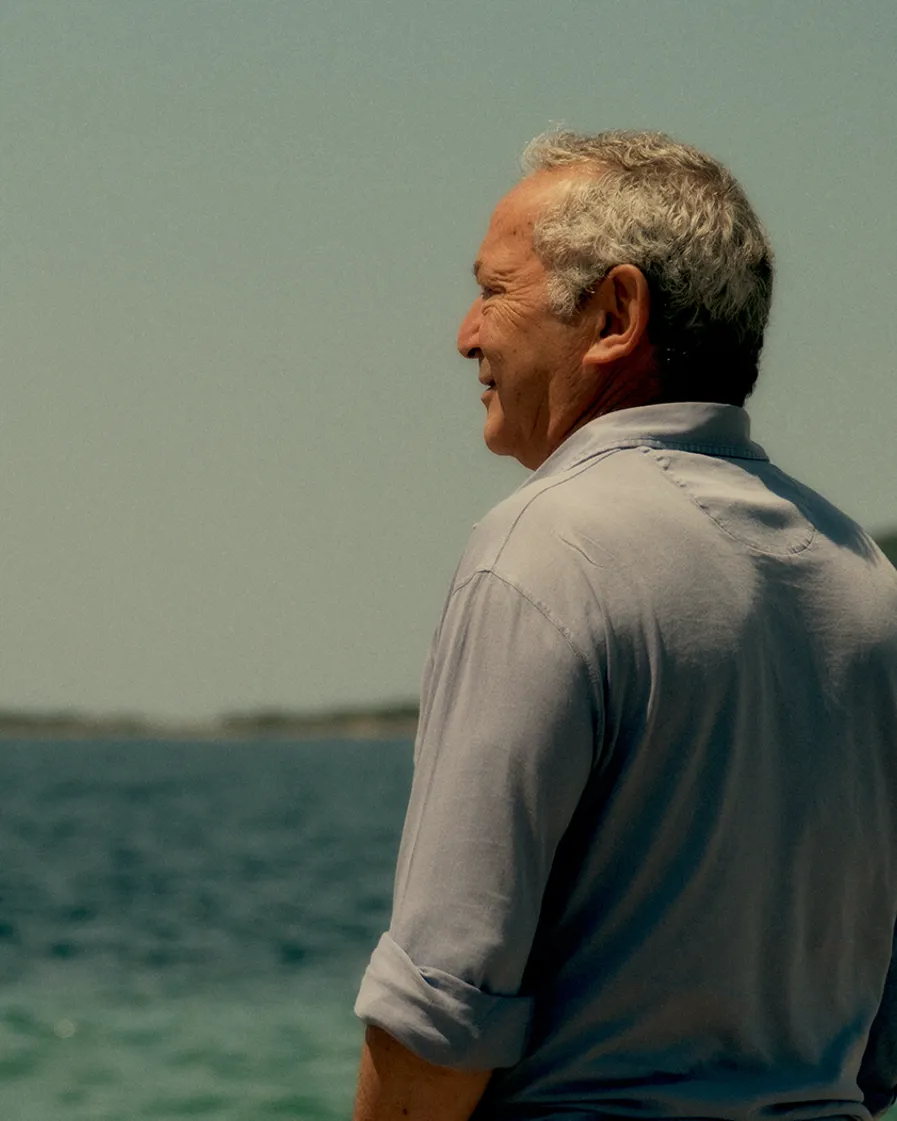
Originals
“When you have been exposed to several cultures throughout your life, it changes who you are.”